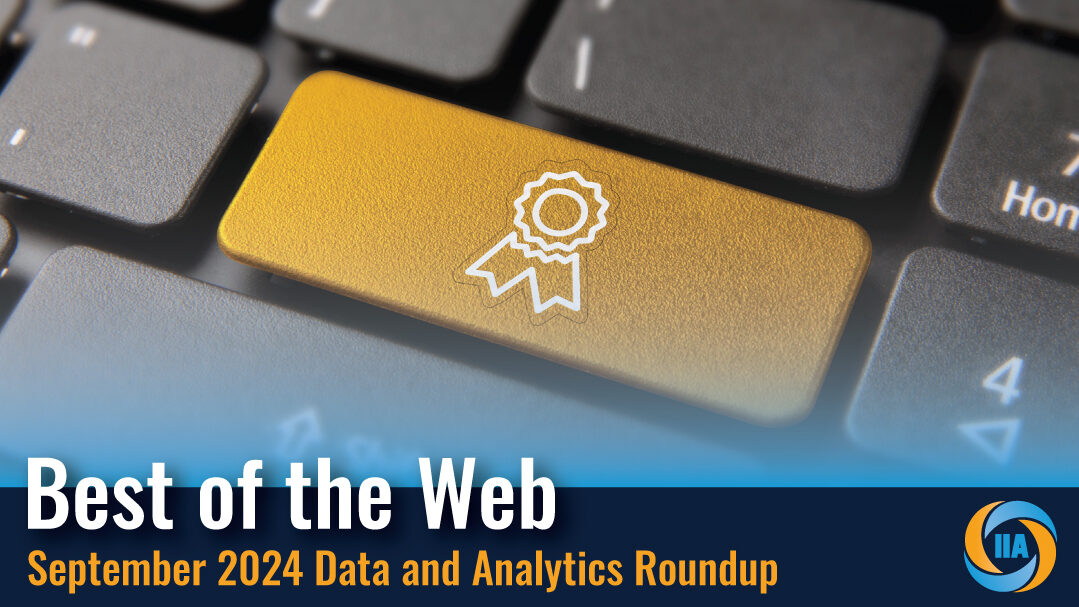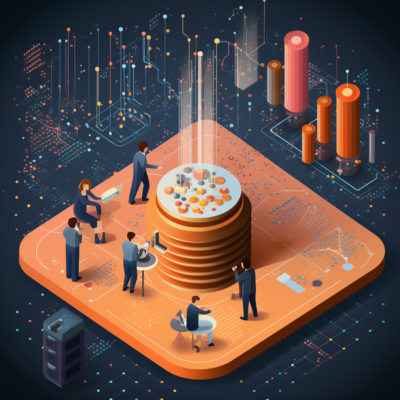
Read below for a roundup of interesting sites, resources, and articles from around the web, curated and contextualized by unbiased analytics experts at IIA. Highlights include an article from HBR arguing for consolidation of tech-related C-suite roles, an article on resolving common AI pain points, and a webinar on fueling AI success with the right data. Follow us on Twitter and LinkedIn to receive daily updates on IIA content and curated content as it becomes available.
Featured Articles on Leadership and Culture
Why Companies Should Consolidate Tech Roles in the C-Suite (Harvard Business Review)
Recently, some organizations have begun to recognize the downside of C-level proliferation and decided to consolidate senior technology and data roles. These individuals — referred to as “SuperTech” leaders — are most likely to be known as chief information officers, but they also have broad responsibility for data and technology functions, and many also have operational responsibilities within the business. Leaders of specialty tech and data functions (data, analytics, AI, cybersecurity) report to them. Establishing SuperTech leadership roles will bring clarity and accountability to organizations’ digital transformation initiatives.
How to Manage Breakthrough Innovation (Harvard Business Review)
"How do you guide a team working on innovative projects—when there is no existing playbook?
Astro Teller says he uses a vetted approach to decision-making for the innovative projects that he and his teams undertake at X, Alphabet’s R&D engine." Listen to this podcast from HBR for all of the details on Teller's approach to explosive growth.

Research and Advisory Network (RAN)
How could you benefit from hundreds of C-suite level D&A executives at your fingertips? Get access to the leading network of independent analytics expertise, allowing you to apply real practitioner insights against initiatives, projects, and problems through RAN today.
Featured Articles on Analytics and AI Strategy
Why GenAI is a Data Deletion and Privacy Nightmare (Towards Data Science)
"Trying to remove training data once it has been baked into a large language model is like trying to remove sugar once it has been baked into a cake. You’ll have to trash the cake and start over."
What’s the State of AI and Copyright in 2024? (Open Data Science)
As AI continues to transform industries, the intersection of AI and copyright is creating legal and creative challenges. How do we protect creators’ rights in an AI-driven world?
A Close Look at AI Pain Points, and How to (Sometimes) Resolve Them (Towards Data Science)
As AI becomes more widely adopted, many organizations are struggling to address its challenges, from privacy issues to navigating product choices. This blog highlights key pain points and solutions, including managing hallucinations in AI tools, addressing data privacy concerns, and selecting the right AI frameworks.Featured Articles on Data
Fuel AI Success With the Right Data and the Right People (MIT Sloan Review)
"Business leaders can increase the likelihood that their AI programs succeed by assuming a greater role themselves. They need to start by identifying the right data to train and operate their AI models. They need to understand what questions to ask and what answers to look for. And they need to include the right people — not just technologists and data scientists, but a diverse set of roles with a diverse set of perspectives."
Implementing Data Governance in Data Science Pipelines: Techniques and Best Practices (KD Nuggets)
This article distills some common techniques, processes, and best practices for successfully implementing data governance in data science pipelines: a central element in data science projects undertaken by organizations.
Examining the National Public Data Breach and Risks for Data Brokers (Information Week)
With the recent public data breach, this article explores the risks data brokers face as they collect and monetize vast amounts of personal data, making them prime targets for cyberattacks.